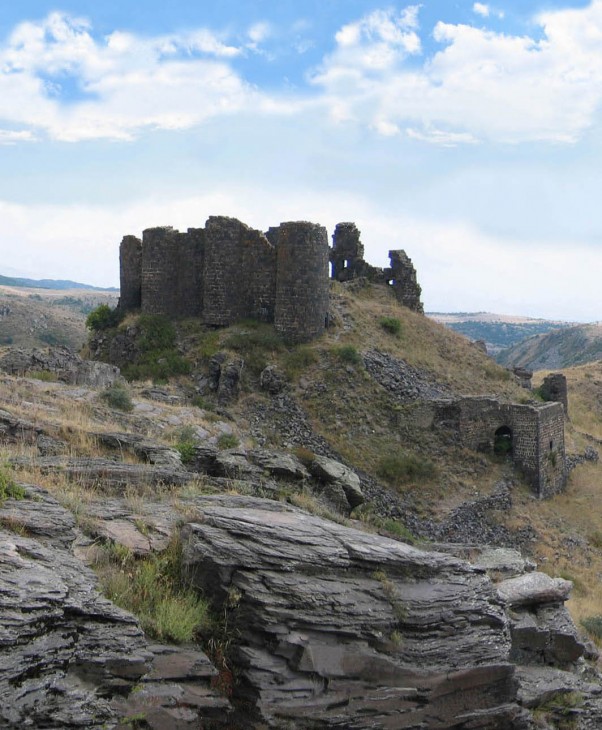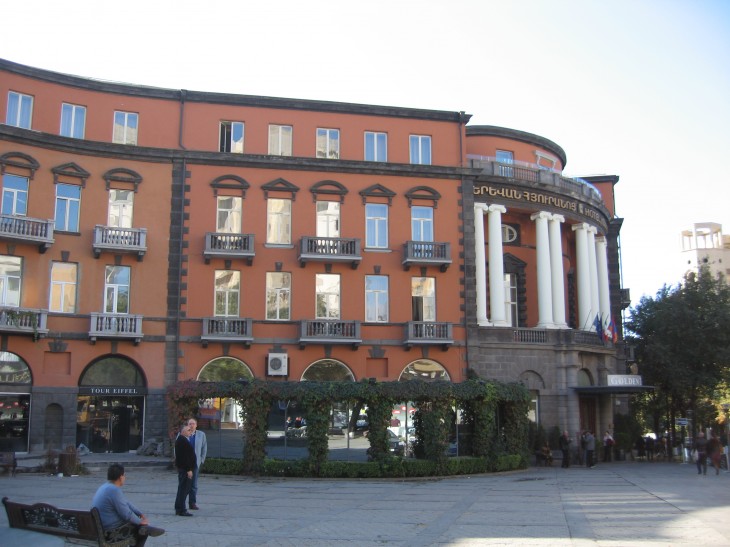E- Journal №2
Editorial
Dear Colleagues,
ICOMOS Georgia and its partners – ICOMOS Armenia, Ltd. Architectura I Prestizh (Ukraine) and Norwegian Directorate for Cultural Heritage – are pleased to announce that issue 2 of the regional e-magazine Heritage Conservation. Regional Network Journal, established within the EU funded project Regional Co-operation for Cultural Heritage Development, is now available online.
Issue 2 of our e-magazine is prevailed by the articles – Mr. Gagik Gyurjyan (Armenia), Dr. Olena Oliynik (Ukraine), Mrs. Valeria Suruceanu (Moldova) – focused on the cultural heritage policy issues, which is a vivid evidence that this is a common and acute problem within the region. It shows that the EaP countries are still in the process of transition, moving along a far not smooth path towards desirable environment of the heritage sector. Another issue of particular interest is the treatment of architectural heritage, which is discussed by Dr. Nune Chilingaryan (Armenia), Yuri Lositski (Ukraine), Dr. Manana Suramelashvili (Georgia), showing that there are common problems with the recognition of the values of architectural heritage, but different concepts of its treatment methodology. Archaeological heritage is presented by Dr. Malahat Farajova (Azerbaijan) and Ana Shanshiashvili (Georgia). While Dr. Farajova’s article concerns a positive case of combined efforts of different stakeholders to introduce novelties through new vision of the Gobustan World Heritage site, A. Shanshiashvili puts forward a pressing problem of protection of the vulnerable and endangered heritage – old gravestones. And finally, a fresh insight into the Tbilisi Historic Centre management problems expressed by The Fulbright Program Fellow, Ms Angela Wheeler (USA).
We would like to thank the authors for their contribution and co-operation.
Dr. Marine Kenia
ICOMOS Georgia and its partners – ICOMOS Armenia, Ltd. Architectura I Prestizh (Ukraine) and Norwegian Directorate for Cultural Heritage – are pleased to announce that issue 2 of the regional e-magazine Heritage Conservation. Regional Network Journal, established within the EU funded project Regional Co-operation for Cultural Heritage Development, is now available online.
Issue 2 of our e-magazine is prevailed by the articles – Mr. Gagik Gyurjyan (Armenia), Dr. Olena Oliynik (Ukraine), Mrs. Valeria Suruceanu (Moldova) – focused on the cultural heritage policy issues, which is a vivid evidence that this is a common and acute problem within the region. It shows that the EaP countries are still in the process of transition, moving along a far not smooth path towards desirable environment of the heritage sector. Another issue of particular interest is the treatment of architectural heritage, which is discussed by Dr. Nune Chilingaryan (Armenia), Yuri Lositski (Ukraine), Dr. Manana Suramelashvili (Georgia), showing that there are common problems with the recognition of the values of architectural heritage, but different concepts of its treatment methodology. Archaeological heritage is presented by Dr. Malahat Farajova (Azerbaijan) and Ana Shanshiashvili (Georgia). While Dr. Farajova’s article concerns a positive case of combined efforts of different stakeholders to introduce novelties through new vision of the Gobustan World Heritage site, A. Shanshiashvili puts forward a pressing problem of protection of the vulnerable and endangered heritage – old gravestones. And finally, a fresh insight into the Tbilisi Historic Centre management problems expressed by The Fulbright Program Fellow, Ms Angela Wheeler (USA).
We would like to thank the authors for their contribution and co-operation.
Dr. Marine Kenia
Cultural Heritage Policy
Architectural Heritage
Archaeological Heritage
External View
|
Heritage Conservation Regional Network Journal

|
|
Introducing_Young_People_to_the_Protection_of_Heritage_Sites ENG
Details »
|
|
კავშირები |
პოლიტიკა |
|
|
საზოგადოება |
სემინარები |
|
 The project is funded by the
The project is funded by the European Union
EU is not responsible
for the content of this website
 |
 |
 |
 |
 |
 |
 |
 |
 |
|
RCCHD Project: Office 16b, Betlemi ascent, 0105 Tbilisi, Georgia Tel.: +995 32 2-98-45-27 E-mail: rcchd@icomos.org.ge |
© 2012 - Eastern Partnership Culture Programme |











